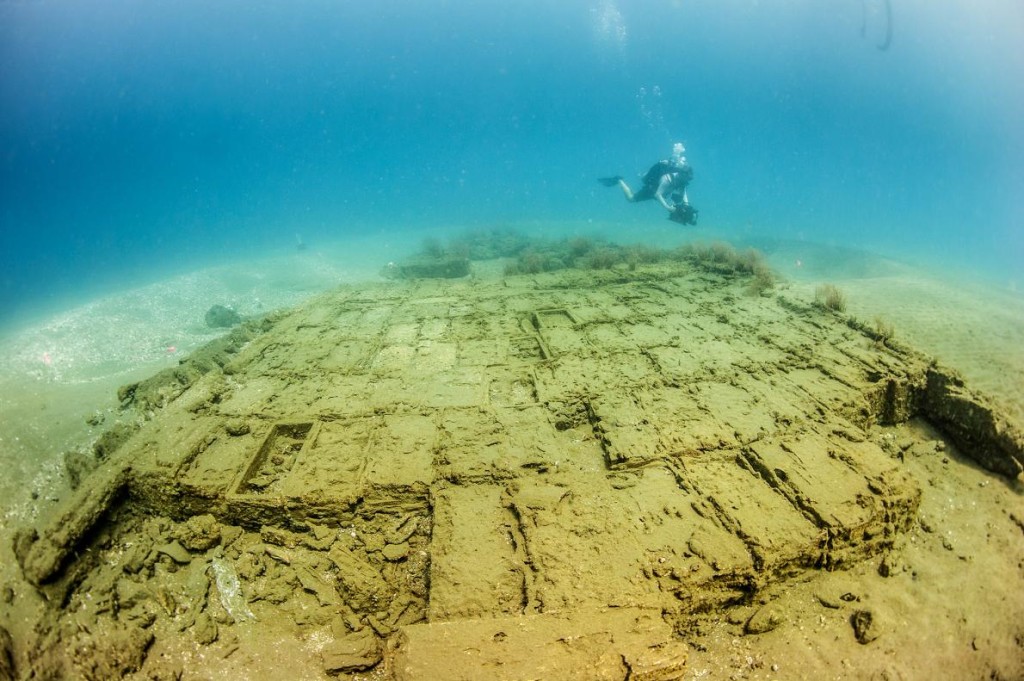Jane J Lee at National Geographic writes of the team that explored the waters off of the coast of Panama and chronicles the identification of a wreck discovered here.
Archaeologists searching for real-life pirates of the Caribbean stumbled on a mysterious shipwreck in 2011. Now after years of historical detective work, they know what they discovered.
In 1681, the Spanish merchant ship Encarnación sank during a storm near the mouth of the Chagres River on the Caribbean side of Panama. Built in Veracruz, Mexico, the cargo vessel was part of the Tierra Firme fleet, the economic lifeline of 17th-century Spain.
Though it sank in less than 40 feet of water, the Encarnación somehow escaped major looting and is surprisingly well-preserved, with the bottom half of its hull intact thanks to burial in the seafloor. (Learn about a cursed warship that’s also been stunningly well preserved.)
The Encarnación gives a rare glimpse of a major shift in world history during the colonial era, says Filipe Castro, a nautical archaeologist at Texas A&M University. “It is the rise of capitalism, imperialism, rationalism, and the middle classes that are going to buy art and consume literature.”
At the time, gold and silver mines in Mexico and Peru fed the ambitions and coffers of Spain’s royal family. To transport the wealth of the New World to Europe, Spanish colonists built fleets of merchant vessels that were escorted by armed galleons and warships, explains Fritz Hanselmann, an underwater archaeologist at Texas State University.
After delivering their treasures to Spain, the fleets would turn around and, laden with European goods, hopscotch throughout the Spanish colonies selling their cargo.
Spain’s two main fleets, the Tierra Firme and the New Spain, serviced Central and South America and Mexico, respectively. “These ships were the backbone of the Spanish colonies,” says Hanselmann, who is part of the team studying the Encarnación.
Oceanic Lifeblood
The Encarnación is one of about 16 Spanish shipwrecks discovered in the Americas, says Jennifer McKinnon, a maritime archaeologist at East Carolina University who is not involved in the study. But nearly all the wrecks found to date have been heavily looted. Ocean bacteria and shipworms that feed on exposed wood usually consume what looters miss.
“Thus we know very, very little about 17th-century Spanish shipwrecks,” McKinnon says.
To find a wreck with much of its cargo still onboard, as well as part of its hull intact, can provide a wealth of new knowledge. “Ships that were built hundreds of years ago didn’t come with blueprints,” Hanselmann says. Studying the Encarnación’s hull has already helped reveal how these vessels were constructed.
An initial examination revealed the use of a material called granel, a kind of permanent ballast, says Chris Horrell, a maritime archaeologist working with Hanselmann. It’s “basically a cement consisting of sand, lime, and pebbles,” he explains, that shipbuilders used to coat a ship’s hull with a thin veneer.
Researchers think granel stabilized ships and was also used as a construction material for buildings throughout the New World. Horrell is not yet sure whether granel was a New World invention or an Old World import, but finding out is part of his research agenda.
An Accidental Find
Hanselmann and colleagues didn’t set out to find the Encarnación. They were looking instead for ships belonging to the notorious English privateer and pirate Captain Henry Morgan, a legendary figure who at the height of his power commanded a fleet of 36 ships and more than a thousand men.
In 1670, 11 years before the Encarnación went down, Morgan was on his way to sack Panama City when a storm sank five of his ships at the mouth of the Chagres River. Hanselmann and his team were searching for those ships when they found a surprise.
Sensors that detect magnetic anomalies alerted the researchers to the presence of metal objects about 0.6 miles (a kilometer) from the mouth of the river. Divers sent to investigate discovered a shipwreck loaded with cargo—an indication that it probably wasn’t one of Morgan’s ships. “If he’s en route to sack a city, his holds aren’t going to be full,” says Hanselmann.
Further investigation revealed a merchant ship instead. “These ships were the ones the privateers were always after,” says Hanselmann.
The Encarnación didn’t carry flashy cargo like gold coins or silver cups, says Horrell. But its workaday materials were valuable—both to pirates and now to archaeologists.
